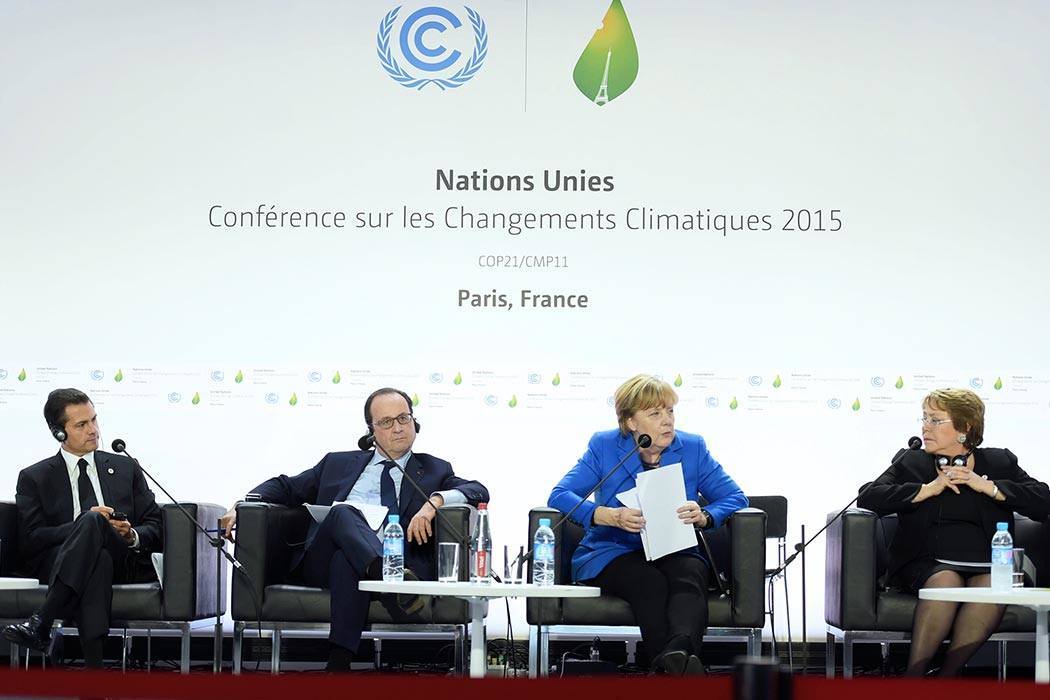The Paris conference is over and, after two weeks, a new climate change deal has been signed. The 195 signers have agreed to try and prevent global average temperatures from rising more than 3.6 degrees Fahrenheit, the level that scientists have deemed threatening to life on Earth. The agreement requires a legally binding review of emissions-reduction targets, though the exact targets will be determined by the nations themselves. According to the BBC, even the “most supportive observers” think that it will be a “very tall order” given the many political and economic intricacies involved in emissions cutting.
However difficult the targets may be to reach, the passage of the agreement itself does constitute a shift in thinking. In 2009, Gallup researchers Anita Pugliese and Julia Ray assessed global attitudes toward climate change, which have steadily become more urgent in the time since the 1992 Kyoto protocol, one of the first large-scale conferences to address the issue. Gallup surveyed about 207,000 residents in 128 countries, which represented more than 90% of the world’s population over the age of 15. Their study included populations living in both urban and rural areas.
Overall, they found that climate change was a key issue and that 61% of the world’s adult population knew at least something about it, with 11% knowing “a great deal” about the problem. By region, more than 80% of people in Europe and the Americas were aware of climate change, with those regions having the most people well educated on the issue. In the Middle East, North Africa, and Asia, slightly more than half the adults knew about the issue, and awareness was lowest in sub-Saharan Africa, where 44% said they knew something. Education was the single best correlate to awareness of climate change.
Of the people polled, 41% were aware of climate change and considered it a personal threat, 18% were aware but didn’t see the threat as serious, and the rest did not know about climate change. Adults in the Americas and Europe were most likely to see it as a significant threat, while adults in Asia—a region that has been key to the debates due to its large and growing population—were least likely to see climate change as a threat. This difference is interesting given that, as of the Gallup poll, the United States, China, India, Russia, and Japan have created more than half of the world’s greenhouse emissions. Many environmentalists have argued that these countries, especially China and the U.S., will need to compromise greatly on this issue.
In China, 62% of the adult population knows about climate change, but most think it is not very serious. Because it perceives itself as a developing country, China has long believed that it should focus on growing its economy, and that developed countries should take the lead on cutting greenhouse emissions.
Of the top five greenhouse gas-emitting countries, awareness is lowest in India, a country that is largely agrarian but has committed to looking for alternative sources of energy. Only a third of adults are aware of climate change, with more awareness in urban areas. However, Indians are more likely than the Chinese to report that climate change seems to be a personal threat.
In Japan, the U.S., and Russia, awareness is high but perceptions of the threat vary greatly. Over 80% of the Japanese think global warming is a threat. In the U.S., almost all adults are aware of climate change, but 35% don’t think it is a serious problem. This number is even higher—39%—in Russia.
Ultimately, the researchers concluded that while climate change is at least on the radar for much of the world, the awareness seems to be lowest in the very places that might be most affected by warming temperatures. Educational attainment increases knowledge, but, as shown in China, the attitudes of the government are also key to how much people prioritize the issue.







